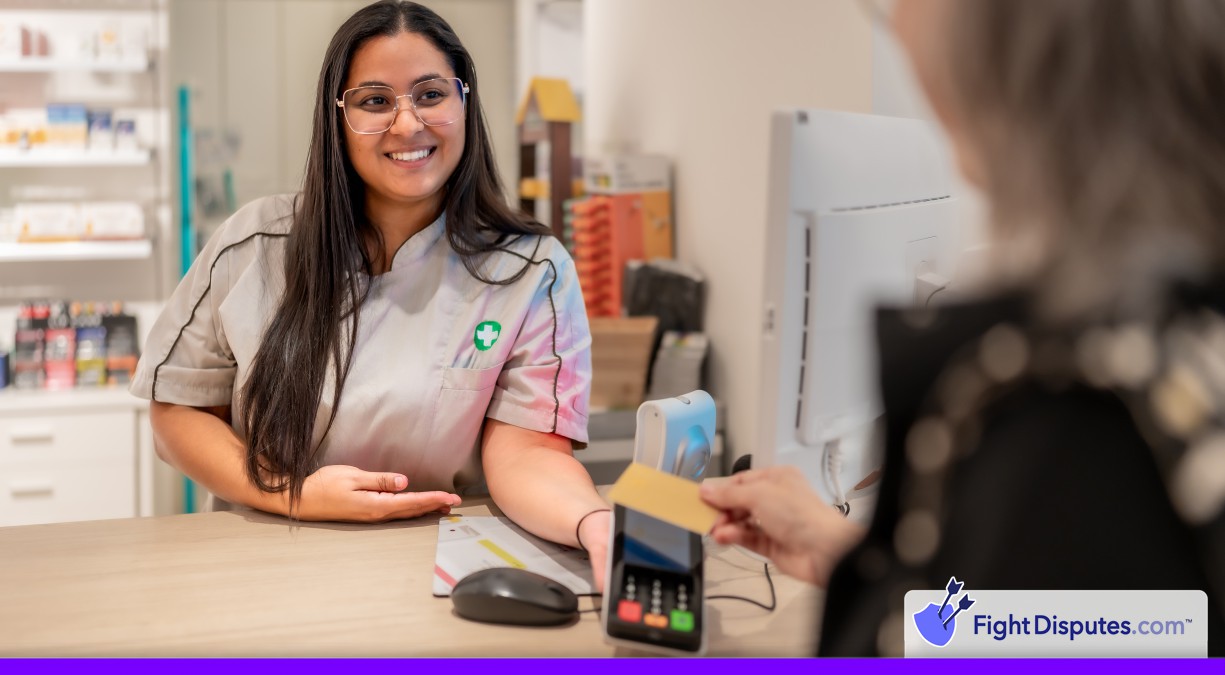UA: Fraud
UA fraud codes are one of the top chargeback problem for merchants. These reason codes come up whenever a customer claims that a transaction was unauthorized. They can cause money losses fast while putting your entire merchant account in danger.
Fraud disputes on transactions receive either UA01 for card-present disputes or UA02 for card-not-present situations. Each code comes with different laws about the proof you need and the ways to respond that can determine how your dispute turns out.
Merchants treat UA codes like warning signs – they show you that there’s a problem with your payment security. Strong prevention steps and paperwork can actually turn these expensive disputes into problems that you can manage without any harm to your revenue or account relationship.
How It Works
Cardholders who see charges on their statement that they didn’t make always have the same first instinct – to call the bank instantly. A representative from the bank will jot down everything that happened and start an investigation to see if this was actual fraud or maybe just a charge that the customer forgot about – this first investigation is where the whole UA fraud code process kicks into gear.
Once the bank confirms that it looks like fraud, they assign a particular UA code based on just how the transaction went down. If somebody used a physical card at a brick-and-mortar store that usually turns into a UA01 case. If the charge happened online or over the phone without the physical card being present, the bank marks it as UA02, and each code easily tells merchants what fraud claim they’re dealing with.
Merchants usually hear about these claims through their payment processor within a few days of the first report. Included in the notification are the transaction facts, the particular UA code, and whatever evidence the bank has already grabbed. This means the original charge amount, the date it went through and any details from the cardholder explaining why they believe it’s fraudulent.
All this paperwork that comes with these notifications can be quite a bit to take in. Banks will send along copies of account statements, letters from the cardholder and sometimes even police reports if the customer filed one. Merchants usually have about ten days to send back their own proof and this tight timeline means that you’ll need to move fast to pull up receipts, signatures or any other evidence that shows the transaction was completely legitimate.
How it Affects Chargeback Prevention
UA01 codes throughout your reports signal that your authorization procedures probably need some work. Maybe your staff ends up skipping the verification steps during busy peak hours. UA02 codes usually mean that your online fraud screening isn’t catching suspicious transactions before they actually go through the system.
Strong authorization laws cut back on your liability quite a bit – that’s the positive news. Card networks will protect merchants who follow the right steps during the authorization process. This protection definitely disappears when you cut corners or ignore authorization laws though. You need to know which codes affect your business the most so you can build the right defenses against future incidents.
Ignore these patterns and your business will have problems. Your chargeback ratio climbs higher each month without fail. Payment processors start to see this upward trend in your account. Eventually they’ll even threaten to close your merchant account if conditions don’t improve fast enough. Nobody wants that problem since prevention is actually fairly easy.
Staff training and UA fraud reduction are connected across the industry. Employees who are properly trained know just the right time to ask for extra verification from customers. They get why careful authorization matters even during busy times. Every prevented UA chargeback saves you money and protects your processing relationship over the long run. Small improvements in how your team works with authorizations can cut UA incidents by half or more within just a few months.
Example Scenarios
UA01 cases usually start like this scenario. You don’t know it. Someone actually stole the card two days earlier. They haven’t even realized it’s missing from their wallet yet. There were a couple of actions that you could have done differently. This transaction was well over your store’s ID verification threshold, so you should have asked for identification. A quick call to your authorization center would have saved you some trouble once the customer started acting strange. You chose speed over caution though with five other customers who waited impatiently in line.
Your authorization request came back clean and definitely looked legitimate on the surface. A few red flags were sitting right there though, completely missed in the rush to process the order.
That address mismatch alone should have been enough to hit the brakes and run some extra verification checks. Add in the weird timing and the customer’s push for fast shipping and the whole scenario starts to look suspicious. Fraudsters always want their items delivered fast because they know they need to act faster – they need those goods delivered before the cardholder sees something strange on their account.
A quick verification email or even a short phone call would have caught this fraud attempt before it turned into a problem. Sometimes the smallest extra step can save you from weeks of trouble down the road.
Requirements and Timeframes
Getting hit with a UA fraud code means the clock starts ticking instantly. You have a full ten days to respond to the chargeback once it arrives. Miss that deadline and you automatically lose the dispute – no exceptions. Once that happens the bank won’t even bother looking at your evidence.
Ten days is actually pretty generous compared to other deadlines in payment processing. It gets harder later though. Cardholders can report unauthorized transactions to their bank for sixty full days, so you might get a dispute about a transaction that was from two months ago, after memories have faded and records are much harder to track down.
Record-keeping laws exist for this very reason. You need authorization records for every transaction that goes through your system. Store those signed receipts and full transaction logs. Once that dispute comes in then you’ll need to produce these documents instantly. You’re legally required to have them ready at all times.
Strict laws also apply to how you process transactions from the start. Never try to force a declined transaction through your system. Always get authorization for any sale that you make.
Break these laws and you’re automatically liable for any fraudulent transaction. Your merchant account provider might raise your fees or put you on probation. Multiple problems could mean that they drop you or end your ability to accept credit cards altogether.
Frequently Asked Questions
What's the difference between UA01 and UA02 fraud codes?
UA01 happens when the cardholder says that their physical card was used fraudulently at your store. Maybe the card was stolen or a fraudster made a counterfeit copy.
UA02 is different because it covers the fraud cases where the card wasn't physically present during the transaction. Online purchases and phone orders fall into this category - situations where the person just used the card numbers without holding the actual card.
This difference matters because you'll need to defend yourself differently depending on what you're up against. With UA01 cases you want to show that you checked the chip or obtained a PIN verification from the customer. A signed receipt helps strengthen your case too. UA02 disputes however will mean that you'll need to prove other details altogether. Showing that the billing address matched what the bank had on file for that customer becomes essential. CVV code verification matters here since it's one of the few ways to prove that the person had access to the physical card.
Time is not on your side with these disputes. Most payment processors give you around ten days to respond once you receive a chargeback notification - which isn't nearly enough time to search frantically for documentation. Authorization records, receipts and any other supporting evidence need to be ready to submit. Some merchants keep everything organized from day one just to get ready for this situation and to tell you the truth, it's a smart idea.
Miss that deadline and you automatically lose the dispute - it doesn't matter if you have perfect evidence sitting in a file cabinet somewhere. Banks will side with the customer by default every time. Make sure to check with your payment processor about their exact deadlines because the timeframes can vary depending on which company you work with.
What evidence helps fight UA fraud chargebacks?
To fight a fraud chargeback, you need to show the bank in detail what went down with the transaction. Authorization approvals from your payment processor and AVS or CVV matches for online orders would be your most helpful evidence to pull together. Chip confirmations and signed receipts work great for in-person sales. Quality beats quantity every time with these cases. One strong authorization record beats ten random screenshots that barely prove anything.
Process the payment without valid authorization in the first place and you're going to lose that dispute - it doesn't matter how much other evidence you pile on. Customer behavior patterns can really strengthen your case as well. If you have access to their login records, include those. You should also record the exact place where you shipped that order and show if it lines up with the verified billing address. Any emails or messages that went back and forth between you and the customer should be saved and included in the dispute package.
Sometimes it's the smaller bits and pieces that wind up making all the difference in cases like these. Unusual customer patterns can actually improve your case. Multiple similar orders in a short time frame usually aren't common for fraudulent behavior. Standard customer service contacts about delivery status also help show real interest in receiving the order. These kinds of behaviors start to paint a pretty picture of a customer who cared about receiving what they ordered and actually wanted it in their hands.
Your best strategy is to gather everything so the bank can follow the full story without any problem. They're going over hundreds of these disputes every week so make yours as easy as possible. Lead with your strongest evidence right up front and then talk about how each extra piece ties in to show that the transaction was completely legitimate.
Can UA fraud chargebacks damage my merchant account?
Yes. Processing fees will hit your account first and then expensive fraud-watch program fees pile on top of that and your entire team ends up spending hours on each chargeback dispute. These different costs can add up fast and hurt your business operations - even if you're otherwise making a decent profit each month.
After you see how these scenarios happen and what they actually cost your business, prevention turns into the obvious choice instead of cleaning up the mess after fraud has already hit you.
Every chargeback tells you everything about how well your security setup is working and payment processors watch these patterns over time.
 Call (844) NO-DISPUTES
Call (844) NO-DISPUTES




